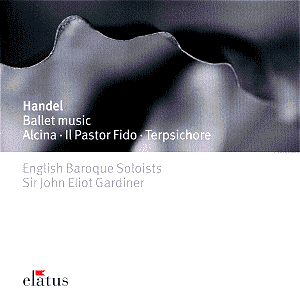Dance and ballet have
always played an important role in Western
music. From the 15th century on, dance
masters were attached to Italian courts.
They wrote ‘balli’ to be performed at
social occasions. After some time these
‘balli’ developed into stories, mostly
based on subjects from classical mythology.
During the 16th and 17th century the
‘court ballet’ developed into something
which reflected the wealth and reputation
of kings and princes. These ballets
were mostly used to pay tribute to the
monarch, symbolised by a mythological
character.
From Italy the court
ballet spread to France where it was
an important part of operas, in particular
during the reign of Louis XIV, who never
missed an opportunity to demonstrate
his own abilities as a dancer. It also
went to England where it took the form
of the ‘masque’.
Although ballets were
associated with a story, the dancers
didn’t play parts like actors. They
concentrated on the technique of dancing
and the virtuoso character of the dances.
Until the early 18th century only men
danced, using masks to portray female
characters. But at that time female
dancers made their entrance. They displayed
great virtuosity in their dancing, but
didn’t pay much attention to expressing
a character.
The French dancer Marie
Sallé (1711-1756) was an exception.
She broke new ground by miming her role
and dancing without a masque. During
the season 1734-35 she stayed in London
and appeared in all Handel’s operas.
Handel wrote his ballet music for her.
She danced as a man in Alcina in 1735.
The fact that these dances appeared
in a dramatic work is reflected by their
character, in particular the contrasting
dances in the third act: ‘Entrée
des Songes agréables’ (pleasant
dreams) and ‘Entrée des Songes
funestes’ (fatal dreams) and the following
‘Combat’ (battle) between them.
Il Pastor fido, a ‘pastoral
conversation’, was first performed in
1712 in London, without great success.
In 1734, at the opening of the season,
it was performed in a strongly revised
version: dances were added in all acts,
and a complete new act preceded it:
Terpsichore. Marie Sallé took
part in it as Muse of the Dance and
Lyric Poetry. The music is different,
less dramatic than that of Alcina.
This recording of the
ballet music from Alcina, Terpsichore
and Il Pastor fido was first released
in 1984 on vinyl. When I listened to
it at that time I liked it a lot. I
hadn’t heard it for quite a long time,
so I was curious to find out whether
I still would appreciate it. In some
ways I do: the quality of the playing
and the recording is excellent, and
the performance is never boring. But
right now I am more aware of its flaws.
I would prefer a little more differentiation
in articulation and dynamics within
phrases and more flexibility in the
overall approach. Sometimes the playing
is harsh and emphatic. The effect is
that some dances don't swing as much
as they should. The 'gigue' from Terpsichore
is a good example.
The contrasts between
the 'pleasant' and the 'fatal dreams'
in Act 3 of Alcina could have been stronger,
in particular the battle between the
two.
But I am grateful for
the fact that this recording of music,
which isn't that often performed, is
available on CD again at budget price,
and I am sure that many of those who
have enjoyed the recording when it was
first released, will still like it.
Johan van Veen

